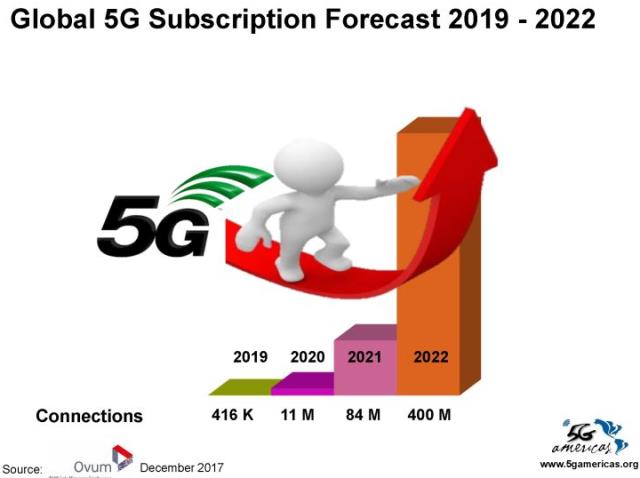
The Federal Communications Commission (FCC) said it’s seeking comment for the auction of the 28 GHz and 24 GHz spectrum bands for 5G services.
FCC aims to offer approximately 6,000 licenses through two spectrum auctions. Bidding in Auction 101 (28 GHz) will commence on November 14, 2018. Bidding in Auction 102 (24 GHz) will commence immediately after the conclusion of Auction 101.
The latest Ovum report suggests that 5G subscriber base will touch 416,000 in 2019, 11 million in 2020, 84 million in 2021 and 400 million in 2022.
FCC said it proposes to have separate application filing windows for the auctions and seeks comment on whether to apply certain auction rules, e.g., prohibition on certain communications, across both auctions.
American wireless operators such as AT&T, Verizon Wireless, Sprint and T-Mobile US are keen to invest in 5G frequencies to build their nationwide 5G networks in order to improve ARPU from both individuals and enterprises.
UK regulator Ofcom last week said the government mobilized close to £1.4 billion from 5G spectrum thanks to overwhelming response from BT-owned EE, Vodafone, Telefonica’s O2 and Hutchison’s Three.
Vodafone won 50MHz of spectrum in the 3.4GHz frequency band auctioned paying £378 million, BT-owned EE won 40Mhz paying £303 million, Telefonica-owned O2 picked up 40MHz for £318 million, and Hutchison-owned Three spent £151 million on 20Mhz. Three UK had already secured a 40Mhz of 5G spectrum prior to the auction.
Analysts noted that the £1.4 billion 5G auction is a far cry from the £22.5 billion raised for 3G spectrum two decades ago.
5G action in America
Telecom industry body 5G Americas earlier said that spectrum plans in the U.S. have been mainly focused on the mmWave spectrum above 24 GHz.
5G Americas said mmWaves are helpful in providing bandwidths for enhanced Mobile Broadband. Their fundamental propagation challenges prevent them from being an appropriate means for very large area coverage.
“The success of 5G depends on5G services availability everywhere, which requires spectrum identification and allocation of all types and ranges,” said Chris Pearson, president of 5G Americas.
A recent Analysys Mason study sponsored by CTIA indicated that US is below China and South Korea in 5G readiness.
“The research highlights the importance of policymaker action in 2018 to reform local zoning rules and unlock access to mid-band spectrum as part of a broader spectrum pipeline plan,” Meredith Attwell Baker, president and CEO of CTIA, said.
Baburajan K





